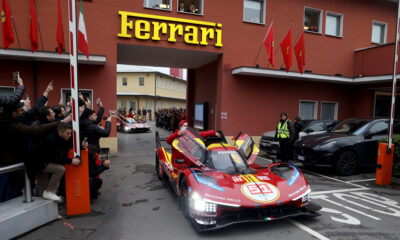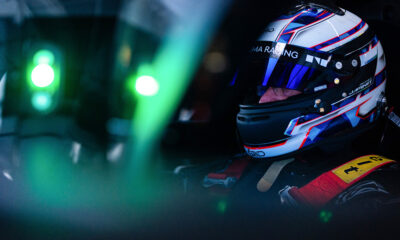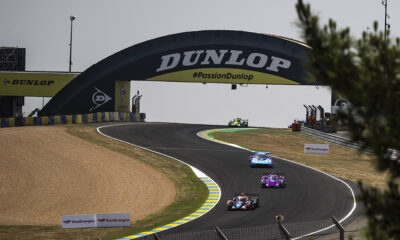
Photo: WEC
Robert Shwartzman declared AF Corse’s victory in the Lone Star Le Mans as “redemption” for the team’s retirement in the 24 Hours of Le Mans, although the run to the flag was complicated by an early tire pressure issue that had strategy ramifications later in the race.
The No. 83 Ferrari 499P, which Shwartzman shared with Robert Kubica and Yifei Ye, came out on top in Sunday’s sixth round of the FIA World Endurance Championship after a late-race penalty for Toyota Gazoo Racing.
It marked the first victory for the yellow-liveried Ferrari, having previously recorded a best finish of fourth in the season opener in Qatar.
Shwartzman was the last driver to be installed at the wheel of the No. 83 car and experienced a tumultuous pair of stints in which he first lost the lead to Toyota driver Kamui Kobayashi and subsequently regained it before facing off pressure from the Japanese driver to win.
“When I went out, Toyota managed to undercut us,” said Shwartzman. “They were really on it.
“Their pace was really strong, so when I was behind them I tried to just stay close. They were having really good pace, really strong.
“At some point in the middle of that first stint I received an info that there might be something going on with Toyota, that they maybe did an infringement and I have to stay close because we don’t know what the penalty is going to be like.
“I was trying to do my best, they were really going fast but I was doing my best to be as close as possible because I knew if there is even a slight chance of a drive-through for them, they’re going to be behind, so every lap counts.
“In the end they took the penalty and in the second stint the only target I had is just to keep the car on track.
“It was really difficult, especially the last laps where I really start to lose the grip. The car was quite hard to drive, drifting around.
“But I was happy that at the end it was a good result.”
Shwartzman pointed out the significance of Sunday’s result after the setback the No. 83 crew experienced at Le Mans, where they retired from a promising position with a hybrid problem.
“We finally took the win, we managed to bring it home,” he said.
“I think we can call it redemption for Le Mans because that was a very big loss; it hurt a lot. We were at the stage where we were really hungry for that win and finally we got it here.”
Kubica revealed post-race that an early error resulting in tire pressures falling below the mandated minimum compromised tire strategy for the No. 83 crew.
As he explained, this resulted in the early-race lead change that saw the Polish driver move ahead of the No. 51 Ferrari driven by Antonio Giovinazzi in order to push as hard as possible to prevent the pressures from dropping further.
This is why the No. 83 car was also given a reprimand at the time.
“The 51 was leading and I [wanted to] stay second with managing the tires and play it [safe] for a later phase of the race, keeping energy as high as possible and using the tires as little as possible,” said Kubica.
“It took us too long to realize that they were too low, so by [that] time the only solution was to go in front and push.
“This is what happened. I tried my best but we reacted a bit too late and I did manage to raise them. I did manage to probably just be legal but simply too late.
“This can happen and that’s why we had to change them. Also because there was risk that if we would keep them with the usage, there is less rubber. Less rubber, you lose temperature, you lose pressure.”
The unforeseen early tire change then had ramifications for AF Corse’s tire strategy later on, and it was this that resulted in the call to have Ye double stint a set of Hard compound tires that subsequently allowed Toyota’s Nyck de Vries to close in.
“It was a consequence of what happened,” Kubica said. “We had to get back to the possibility of having the most performing tires in the end of the race.
“You always look to have the best possible tires for the last two hours and this was the case.
“That’s why we went for Hards to play it safe. We could keep some used Medium tires, but in case the wear will be too high, we might face punctures or the performance drops off a cliff.
“So that’s why we opted for a safer solution which probably was the slower one, but it was the safest way to get us back into a correct strategy.”


























